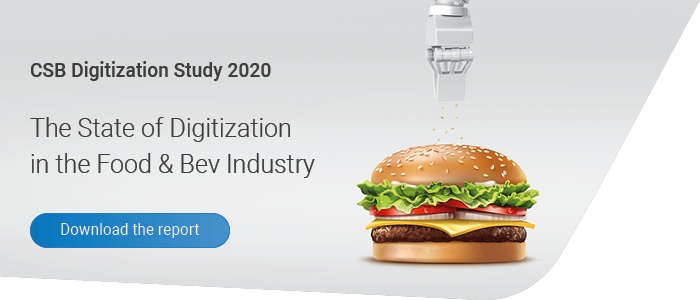Many food companies are looking for the optimal way to embark on their journey towards digital transformation. How should they start without taking too much risk? Who should do it? How do you find the right IT partner? Here are six important tips for you as CEO to prepare your company for the digital future.
1. Define the benefits
Digitalization projects usually comprise new technologies as well as measures for process optimization. Sure enough, paper should disappear from warehouses and production, and recipes should be managed electronically. Ideas for new business models may also emerge along the way. Therefore, define in advance the internal benefits as well as the benefits for your customers. This is the only way to measure the success of your project.
2. Work with experienced partners
Get an experienced partner on board, because practical experience beats theory. Many know the philosophy of digital transformation, but only a few providers can boast concrete implementation successes in food companies. Commission experts that have specific IT and automation know-how in the food and beverage industry. Visiting a reference company can be very informative. There you will see whether automatic weigh labeling and palletizer robots really work well.
3. Start out small
Start in a few areas and then expand gradually. Good starting points are the workstations in batching or picking. Basically, your pilot project should already be oriented to your processes and challenges. Make sure that the technologies not only fit to your application, but are also easy to use. This ensures that the internal conditions keep pace and that you neither overtax your technology or your employees.
4. Count on standards
To achieve a fast rollout of the new solution you should not experiment too much. Wherever possible, rely on standard technologies and partly supplement them with innovations. Not every trend is practical, and it makes no sense to expose yourself to unnecessarily high risk to be the first to use a new technology. The blockchain may offer quite a bit of potential for the food industry - but it’s going to be a long time before it’s established on a large scale.
5. Qualify your staff
Make sure that your employees are qualified. Those who still carry out quality tests with pen and paper or use Excel as planning tool must be introduced to electronic data processing gradually. One thing is for sure, IT skills will soon be a key qualification in the departments.
6. Make digitalization a high-level issue
Who will do it? Ideally, the boss takes the lead, for who better to prepare your company for the digital future than the person at the top? After all, it is about strategically important goals such as better processes, new sales potential or even a new business model. But watch out: Digitalization is a collaborative matter. All relevant departments and, first and foremost, the CIO should be involved as early as possible.
Read more practical tips around digitalization in the food industry? 6 technologies for the smart food production.


